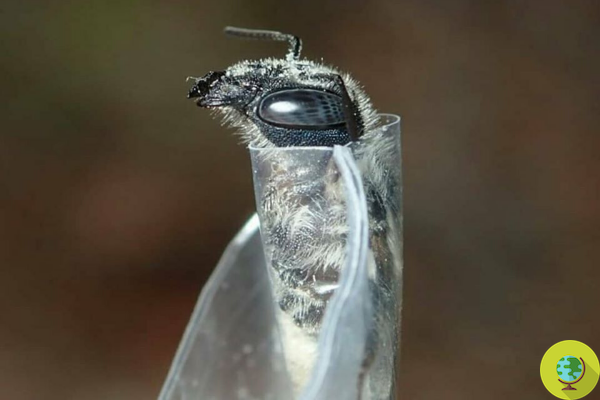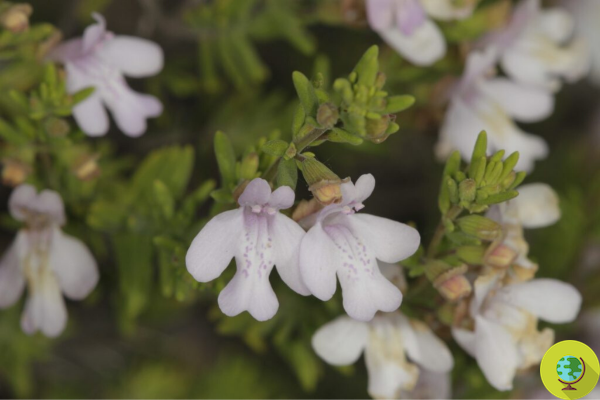Good news from Florida: the blue bee (osmia calaminthae) is not totally estista. In March, a specimen was found near the Lake Wales Ridge.
Scientists believed they were extinct, but fortunately they were wrong: "blue bees" still exist. A very rare specimen was spotted last March in Florida by university researcher Chase Kimmel, after 4 years of unsuccessful research.
In reality, it is not really a bee, but an insect belonging to the species Osmia calaminthae.
They are prevalent mainly in Florida and owes their particular blue color to the preference for pollen from the purplish flower of the Clinopodium ashei plant.
"I was aware that we would probably never see these osmias again, so it was very exciting to see one of them",
Kimmel said.

@Chase Kimmel
“We are trying to fill a lot of gaps on this species. This shows how little we know about the insect community and how many discoveries we can still make. "
clarified the researcher.
Kimmel and his advisor, Jaret Daniels, director of the McGuire Center for Lepidoptera and Biodiversity at Florida Museum, are working on a two-year research project to determine the current status and population distribution of the blue calamintha bee, as well as nesting and feeding habits.
It seems that he only lives near the Lake Wales Ridge, an area known worldwide for its incredible biodiversity.
The survival of this species depends strictly on Clinopodium ashei, a plant native to the United States, which is in danger of disappearing.

@Chase Kimmel
While pollinating, it rocks its head back and forth to collect as much pollen as possible. Daniels and Kimmel are trying to determine if it feeds exclusively on Clinopodium ashei or other flowers by studying the pollen collected and monitoring its movements.
Osmia calaminthae is an apoid insect, which creates individual nests rather than hives like other bees. In fact, they tend to use nests made of earth or hollows of dead trees.
What happened in Florida is a beautiful discovery that gives us hope for the future of this fascinating and colorful species of bees, as well as for the planet!
Source: Florida Museum
Read also:
World bee day: let's save the "gardening" insects of our mother earth


























